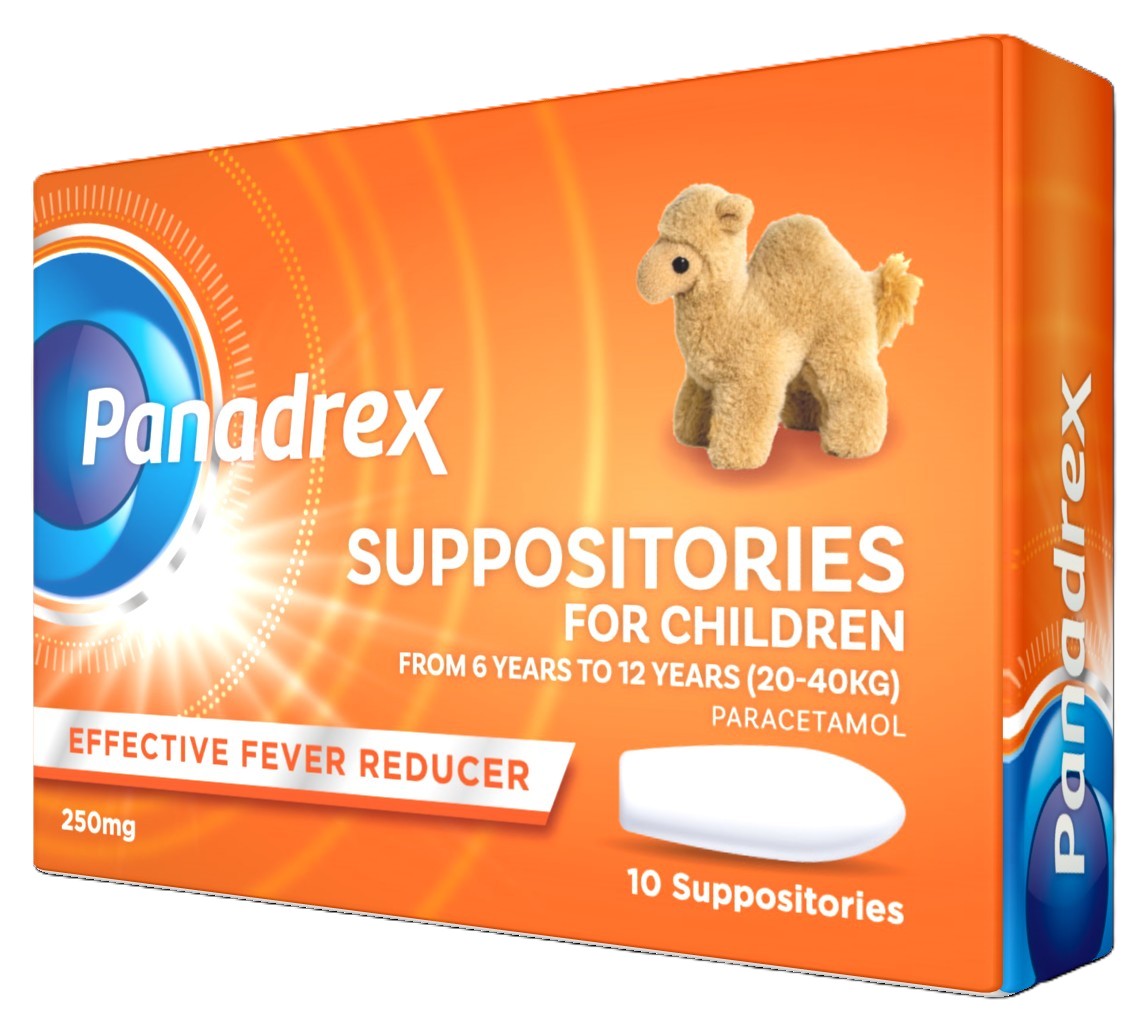Panadrex Suppositories 250 mg - 10 suppositories
Panadrex Suppositories 250 mg
Active ingredients: Each suppository contains:
Paracetamol 250 mg
Mode of Action:
Panadrex Suspension contains Paracetamol which belongs to a group of medicines called analgesics and antipyretics similar to aspirin but with no demonstrable anti-inflammatory activity.
Indications:
• For the treatment of mild to moderate pain (such as toothache) and fever.
• Panadrex Suppositories may be especially useful in patients unable to take oral forms of paracetamol, e.g. post-operatively or with nausea and vomiting.
Posology:
Children 6-12 years: 1-2 suppositories every 4-6 hours (Maximum 4-8 in 24 hours)
Precautions:
• Dosages should be based on the child's age and weight.
• Do not exceed the recommended dose.
• Higher doses do not produce any increase in analgesic effect.
• Do not take more frequently than every 4 hours.
• Should not be used >3 days, except on the advice of a doctor.
• Caution when used in patients with impaired kidney or liver function. Liver damage is possible in adults who have taken 10g or more of paracetamol.
• Patients should follow the advice of their doctor regarding its use in pregnancy. Available published data does not contraindicate breastfeeding.
Contraindications:
• Hypersensitivity to the active substances (paracetamol) or any of the other excipients.
• In combination with other paracetamol-containing medication
Undesirable effects:
Common adverse events (>1/100) include redness of the rectal mucous membranes.
Pharmacokinetic properties:
• Paracetamol is well absorbed by both oral and rectal routes. Peak plasma concentrations occur about 2 to 3 hours after rectal administration. The plasma half-life is about 2 ¼ hours and is prolonged in cirrhosis.
• Paracetamol is primarily metabolized in the liver by conjugation to glucuronide and sulphate. A small amount (about 3-10% of a therapeutic dose) is metabolized by oxidation and the reactive intermediate metabolite thus formed is bound preferentially to the liver glutathione and excreted as cysteine and mercapturic acid conjugates.
• Excretion occurs via the kidneys. 2- 3% of a therapeutic dose is excreted unchanged; 80-90% as glucuronide and sulphate and a smaller amount as cysteine and mercapturic acid derivatives.
Storage and disposal:
• Store below 25˚C. Do not freeze.
How to use?
Children 6-12 years: 1-2 suppositories every 4-6 hours (Maximum 4-8 in 24 hours)
Ingredients
Paracetamol 250 mg
| SKU | 1974007 |
|---|

